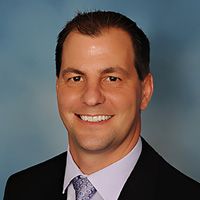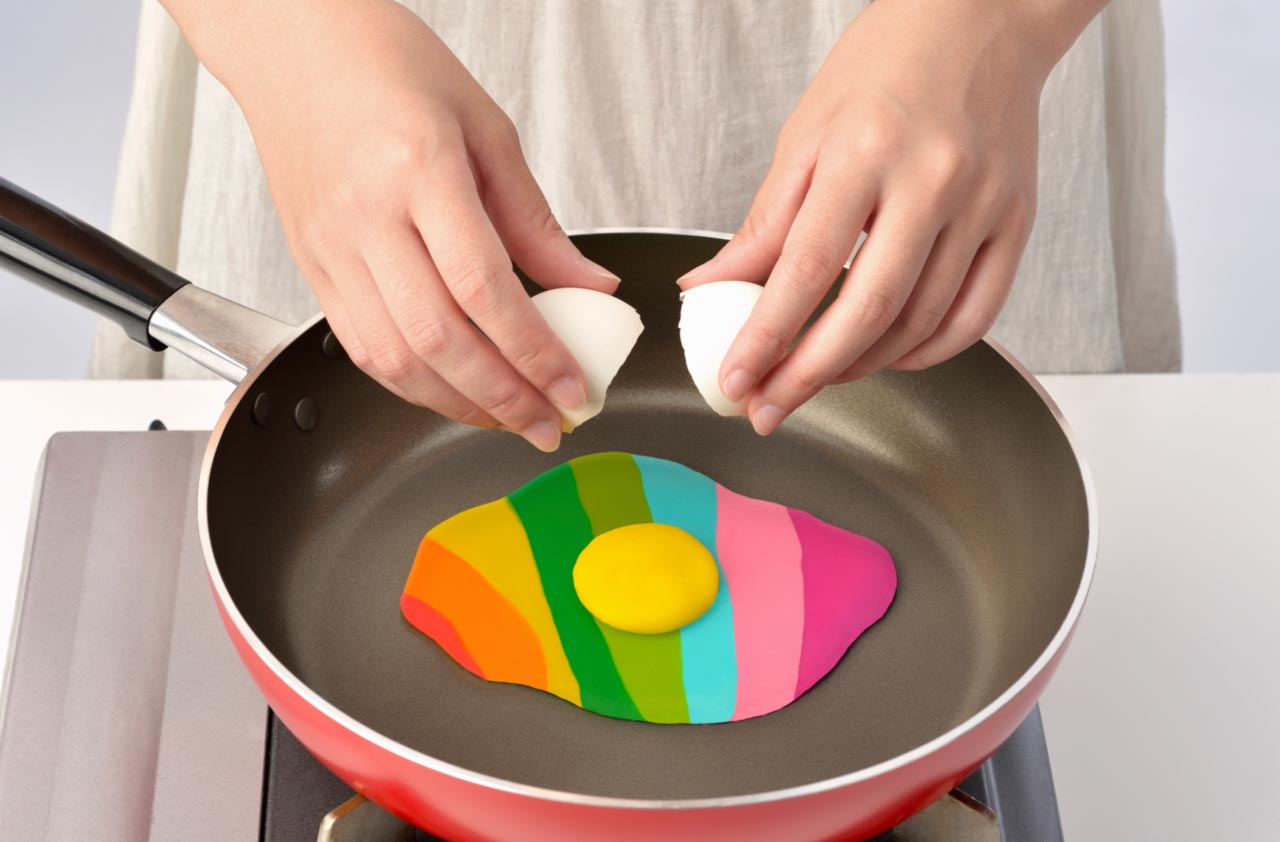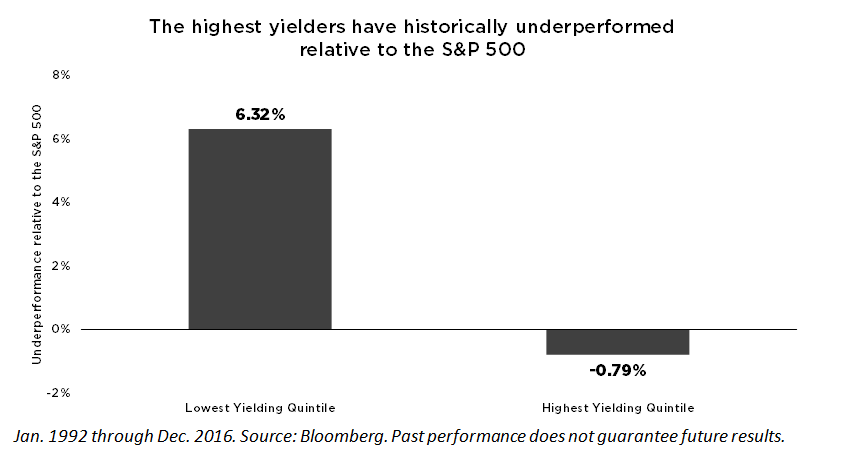This Will Make You Rethink Your Dividend Investing Strategy
Despite the popularity of using dividend yields to choose stocks for their retirement portfolios, there's a better indicator that investors should be looking at.


In the current interest rate environment, individual investors are understandably on the hunt for income. Naturally, many of them turn to dividend investing to generate a steady stream of income, especially in retirement.
However, the problem is that the way most people approach dividend investing is to fall into the yield trap. A stock that pays an above-average yield seems attractive and presumably solves the income problem. But does it?
Focusing on stocks that pay the highest current dividend yield is akin to telling a teenager to drop out of school to work flipping burgers so they can earn an income at that point in time. Wouldn’t they be better off INVESTING in their FUTURE so their income has the greatest potential to grow?
From just $107.88 $24.99 for Kiplinger Personal Finance
Become a smarter, better informed investor. Subscribe from just $107.88 $24.99, plus get up to 4 Special Issues

Sign up for Kiplinger’s Free Newsletters
Profit and prosper with the best of expert advice on investing, taxes, retirement, personal finance and more - straight to your e-mail.
Profit and prosper with the best of expert advice - straight to your e-mail.
The fact is that dividend-paying companies produce three, not two forms of return: stock price appreciation, current dividend yield, and something else far more valuable but often overlooked: the possibility of future dividend growth.
Current yields are tempting and could produce income streams in the short-term, but it’s not sustainable.
This is not an opinion, but rather a proven fact. To wit, my colleagues and I at Reality Shares looked at Bloomberg data, between 1992 and 2016 and found, on average, the companies with the highest dividend yields historically underperformed the broad equity market on a total return basis. Conversely, companies with the lowest dividend yields historically outperformed the broad equity market.

Certainly, this data is not meant to discourage you from dividend investing, but rather, it should make you rethink your dividend investing strategy. As the following chart shows, nearly 40% of the total return of the S&P 500 can be attributed to reinvested dividends and the power of compounding.

This is not just a domestic phenomenon. MSCI research found dividends were the largest contributor to global equity returns, accounting for 93% of total return over the 20-year period from December 1994 through September 2015.

Dec. 1994 through Sep. 2015. Source: MSCI. Past performance does not guarantee future results.
If you break it down further, dividend yield accounted for only 29% of total return, whereas the growth of dividends represented nearly 65% of the performance over 20 years.

Go for the Dividend Growth
While the allure of a high-yielding stock can be attractive, investors need to remain disciplined and should instead focus on the stocks that are committed to growing dividends. Not only has the dividend growth component contributed significantly to historical total returns, but further research from Ned Davis confirms dividend growers and initiators have historically outperformed all other categories of stocks (over a span of 40+ years).

So, what is going on here? Remember what Albert Einstein said about the power of compounding: “Compound interest is the eighth wonder of the world. He who understands it earns it . . . he who doesn't . . . pays it. Compound interest is the most powerful force in the universe.” This is the key to unlocking the magic.
But here’s what even the most ardent dividend growth investors get wrong ...
In This Case, Size Really Does Matter
The magnitude of dividend growth actually matters even more so than whether or not a stock grows its dividend. Even among all the brilliant dividend-focused investors, most people miss this. Instead of simply being satisfied with companies that grow dividends, investors should be asking how much they grow dividends.
Companies that grew their dividends the most historically outperformed the broad equity market, and those companies with little to no dividend growth actually underperformed the broad equity market (on a total return basis). The following chart illustrates how the stocks with the highest dividend growth rates have historically outperformed the S&P 500 by nearly 9%, and it emphasizes the relevance of the level of dividend growth.

Remember that investing, for the most part, is all about the long term. Therefore, don’t worry about the low current income, and instead focus on companies that have the highest potential to grow their dividends in the future.
Dividend growth investing has historically offered investors an opportunity to outperform the market with lower volatility. Despite the popularity of dividend yield, dividend growth has been a better indicator of outperformance relative to the broad equity market, and the magnitude of dividend growth should be considered as part of a dividend investment strategy.
After running the dividend analysis numbers, here are the companies we believe are poised to raised their dividends the most (according to in-house research and our proprietary methodology, DIVCON):
Click here to find out how you can identify the leading dividend growth stocks for your portfolio.
Visit www.realityshares.com for important disclosures.
Profit and prosper with the best of Kiplinger's advice on investing, taxes, retirement, personal finance and much more. Delivered daily. Enter your email in the box and click Sign Me Up.

Eric Ervin founded Reality Shares, a firm known for ETF industry innovation. He led the launch of investment analytics tools, including Blockchain Score™, a blockchain company evaluation system; DIVCON®, a dividend health analysis system; and the Guard Indicator, a directional market indicator. These tools were designed to help investors access innovative investment strategies as well as provide alternative dividend investment solutions to manage risk.
-
 Trump Reshapes Foreign Policy
Trump Reshapes Foreign PolicyThe Kiplinger Letter The President starts the new year by putting allies and adversaries on notice.
-
 How to Plan a (Successful) Family Reunion
How to Plan a (Successful) Family ReunionFrom shaping the guest list to building the budget, here's how to design a successful and memorable family reunion.
-
 These Unloved Energy Stocks Are a Bargain
These Unloved Energy Stocks Are a BargainCleaned-up balance sheets and generous dividends make these dirt-cheap energy shares worth a look.
-
 You've Heard It Before, But This Investment Advice Still Pays Off
You've Heard It Before, But This Investment Advice Still Pays Off"Time in the market beats timing the market" ¬— been there, done that, right? But don't write off the underlying advice. There's a reason it's a popular saying.
-
 Are Clients Asking About Adding Crypto to Their Retirement Plans? This Is How Advisers Can Approach This New 401(k) Frontier
Are Clients Asking About Adding Crypto to Their Retirement Plans? This Is How Advisers Can Approach This New 401(k) FrontierAdvisers need to establish clear frameworks to address client interest, navigate risks like volatility, and ensure they meet their fiduciary responsibilities.
-
 3 Niche Oil and Gas Investments for Next-Gen Wealth Builders
3 Niche Oil and Gas Investments for Next-Gen Wealth BuildersLesser-known segments of the oil and gas sector present unique opportunities for next-gen investors and family offices, as long as they're vetted thoroughly.
-
 How to Avoid Being Buried by the Tax Avalanche in Retirement: Tips From a Wealth Adviser
How to Avoid Being Buried by the Tax Avalanche in Retirement: Tips From a Wealth AdviserAll that cash you have in tax-deferred accounts could launch you into a higher tax bracket when you start withdrawals. It's time to protect your income.
-
 I'm a Financial Adviser: This Is the Real Secret to Retirement Success
I'm a Financial Adviser: This Is the Real Secret to Retirement SuccessFor real retirement security, forget about chasing returns and focus instead on the things you can control: income, taxes, risk-taking and decision-making.
-
 Is Your Retirement Plan Based on Social Security Fact or Fiction?
Is Your Retirement Plan Based on Social Security Fact or Fiction?One in two Americans don't know much about Social Security — and some are basing their retirement on mistaken beliefs. It's time to separate fact from fiction.
-
 Are You Investing to Score Points or Make Money? Cautionary Tales From an Investment Adviser
Are You Investing to Score Points or Make Money? Cautionary Tales From an Investment AdviserHave you become numb to risk? Is your brokerage app or website fueling your desire to trade? An investment adviser explains why it always pays to be cautious.
-
 Are Roth Conversions for Retirees Dead in 2026 Because of the New Tax Law?
Are Roth Conversions for Retirees Dead in 2026 Because of the New Tax Law?The OBBBA's permanent lower tax rates removed the urgency for Roth conversions. Retirees thinking of stopping or blindly continuing them should do this instead.